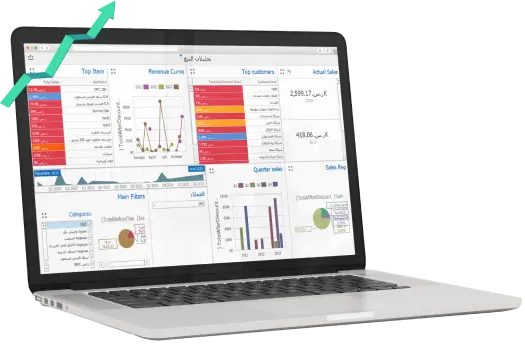Every company has a dividend policy and the dividend payout ratio must be linked to the of shareholders wealth maximization objective but also linked to the existence of investment opportunities for the company and also the perspective of the shareholder of the cash dividends and capital gains that will achieved after a while
The dividend policy concerns the firm's differentiation decisions between the dividends to the shareholders retain or reinvest in the company
Two questions must be answered, first, what is the dividend payout ratio to the total earnings the company has achieved and what is the policy the company has followed in dividends in terms of stability and growth of dividend payout ratio and the dividend policy influences on the value of the company through which it effects on the share, when the shareholder decides to acquire the common share, he expects to get a dividend yield or the stock price increase and then it can be sold and, of course, better to get it in cash
The company's dividend policies vary from company to another, and the policy that fit a particular company can be that does not fit another company because of the differences and the multiplicity of factors, but there must be a necessity for stability of dividends to the company and the shareholder, and for the company, that increases the trust of corporate stakeholders, and for the shareholder, the stability of dividends increases income source, and one of the most important dividend policies is the following
Regular dividend policy: The company pays out dividends to its shareholders at the end of every year, this policy is appropriate for some shareholders and does not affect the stock price but probably in some years that can liquidity problems make it difficult the company pays this fixed amount and there are some companies set aside a reserve to pay these dividends when there is a problem in the company liquidity.
Stable dividend policy: This policy is based on the percentage of profits paid out as dividends is fixed annually to shareholders and this policy associated with the company's earnings upswing and fall ratios, this policy provides the company flexibility in the issuance of the rest of the profits and use it as a funding source.
Regular dividend plus extra dividend policy: Meaning if the company determines the dividend payout ratio of 30% and the earnings per share (total earnings / outstanding shares) equals 4 pounds, the amount of dividend will be 30% *4 = LE1.2, if the department decides to the extra dividend, for example, the amount of the value LE10 in the case of the increase of earnings per share is 4 pounds, for example, the earnings per share value during the year is LE6, and the total stock dividend is LE 1.2 + 10% * (6-4) = 1.4 and this policy provides to the shareholder with a minimum of dividends but it is risk-free.
The dividend policy is concerned with the financial requirements to meet investment opportunities available and availability of finance and the company must when determining and choosing the dividend payout ratio would set the optimal size of the capital budget and the required financing
Dividends:
Dividends types are cash dividend, scrip dividend, or non-cash dividend
First, Cash Dividends
The dividends in joint-stock companies has certain procedures, including holding the company's general meeting to report and discuss the dividends, and there are three dates related to the payment of dividends, which are as follows
1- Date of Declaration
The date of declaration is the date that a company’s board of directors votes and decides to give a cash dividend to all of the company shareholders.
2- Date of Record
This is the date when the corporation actually looks at its records to determine who will receive the dividend.
3- Date of Payment
This is the date, when the dividend is actually paid to shareholders.
The Accounting Treatment of Dividends:
1- On February 10, 2018, the board of directors of corporation declared dividends as follows: declared a cash dividend of LE3 per share and it has 5,000 shares outstanding, and the accounting treatment is as follow
|
Account |
Debit |
Credit |
|
Retained Earnings |
15,000 |
|
|
Dividends Payable (current liabilities) |
15,000 |
On the Date of Record, say, February 25, 2018
There are no journal entries on the Date of Record, but the company determines which stockholders receive dividends, the corporation’s records (the stockholders’ ledger) determine its stockholders.
On the Date of Payment, say, March 10, 2018
|
Account |
Debit |
Credit |
|
Dividends Payable |
15,000 |
|
|
Cash |
15,000 |
Second / Stock Dividend
The stock dividend is a transfer of funds from retained earnings to paid-in capital and this is a capitalization of retained earnings
The more the earnings are retained in the joint-stock company and are not dividends made, the price of the stock in the stock exchange will rise as the market value, and the stock dividend leads to an increase the volume and the stock market price decrease and thus creating a balanced stock prices in the stock exchange so that it does not rise to the extent that investors avoid stock
Third/ Scrip Dividend
Companies can pay scrip dividend to shareholders because have too little cash available or either the company's desire to retain the cash due to its need for investments or the company's desire to increase its capital by transferring part of the reserves and retained earnings to capital, this enhances the company's ability to request loans from the bank due to the company's capital increase and do not pay tax on scrip dividend like cash dividends and makes the stock price decrease which works to increase the stock trading volume in the stock exchange, which reduces some monopolized shares, and the shareholder equity, as the number of shares will increase, but the value of shareholder equity will still the same due to the share price decrease after the scrip dividend
In other words, if the number of shares within the company is 3,000 and its shareholder value = 3 million this means that the stock's value LE1000, and the company issued a scrip dividend 150 shares
That means that has 3150 new shares and shareholder value still has 3 million, then
New stock price = 3 million / 3150 = 952.3
But the total stock value is still the same = 3150 * 952.3 = 3 million
The idea is that the total value of shares will be fixed but the stock price will change, boosting demand on the stock and that's the most important reason for scrip dividend because it contributes to an increase in the number of shares outstanding and the share price decrease, thus, increasing the demand and trading on the stock
In accounting, two cases must be distinguished:
Case 1: The case of stock dividends equal to or less than 25% of the value of the shares traded in the stock exchange.
Case 2: The case of stock dividends in excess of 25% of the value of the shares traded in the stock exchange.
Example: The capital of Al-Salam Company reached LE1,000,000 divided into 10,000 share value is LE10
1,000 shares were issued as dividends and the market value was 12 pounds
The market value of the stock at that date is equal to the nominal value of the share, plus, it has a share premium
Thus, there is a share premium of LE2 per share
In this example, stock dividends are less than 25% of the value of the shares traded in the stock exchange (10% of 1,000 shares to 10,000 shares)
On the Date of Declaration
|
Account |
Debit |
Credit |
|
Retained Earnings |
12,000 |
|
|
Common Stock Dividend Distributable |
10,000 |
|
|
Addition Paid-In Capital - Common Stock |
2000 |
On the maturity date for the transfer of ownership or registration of equity instruments for their new owners
|
Account |
Debit |
Credit |
|
Common Stock Dividend Distributable |
10,000 |
|
|
Share Capital Account |
10,000 |
It should be noted that the share premium has been recognized as additional capital in this case
Suppose that stock dividends, let's say 3,000 shares
In this case, the shares outstanding as dividends in excess of 25% of the value of the shares traded in the stock exchange (30% of 3,000 shares to 10,000 shares)
The accounting treatment is the non-recognition of the share premium as additional capital and do not record it and the journal entry is as follows:
On the Date of Declaration
|
Account |
Debit |
Credit |
|
Retained Earnings |
30,000 |
|
|
Common Stock Dividend Distributable |
30,000 |
On the maturity date for the transfer of ownership or registration of equity instruments for their new owners
|
Account |
Debit |
Credit |
|
Common Stock Dividend Distributable |
30,000 |
|
|
Share Capital Account |
30,000 |
Stock Splits
Stock split is a practice of increasing the total number of shares of common stock outstanding. Its meaning is that the company splits its shares into a larger number of shares and the aim that it wants to reduce the share price and thus increase the demand for the share and increase trading on it and increase the number of shareholders in the company, which prevents the monopoly of shares, but the shareholders equity still the same and no journal entry is created to reversing the bonus shares dividends by decreasing the retained earnings by the value of the dividends, and all that matters is that the accountant must change the names of the accounts (Dr. common stock dividend distributable- 10 money units par value Cr. share capital account - 5 money units par value), the outstanding shares are divided into specific numbers of predetermined shares and thus the liquidity of the stock increases, the nominal value of the share is also divided in the same proportion that the shares are divided into.
For example, let's say that a company has 1,000 shares outstanding, if the par value is $ 10 per share. Suppose that the company declares a 5-for-1 stock split. Consequently, the stock has a par value of $ 10 per share transfers into 5 shares that have a par value of $ 2 per share, meaning that the person who owns 100 shares of this company will have 500 shares after the stock splits. The nominal share value decreases
Although it is very similar to the issue of bonus shares (which are shares given to shareholders rather than cash dividends), but they are different.
Basically, companies choose to split their shares to keep their share price at a level more acceptable to investors, thus, it can be said that the goal of stock splits is to make the companies' shares accessible to the largest possible number of investors.
The Tax Treatment of Dividends
Scrip dividends are exempt from tax provided there is a decision of the general meeting for issuance of bonus shares whether this is done from reserves, retained earnings, or net profit for the year, this decision is approved by the General Authority for Investment and the bonus shares registered in MCDR
But cash dividends who gets the natural person or resident in Egypt from the stock corporation or partnerships
Also, the economic zones companies and the tax rate of 5% if the contribution percentage of the issuer is more than 25% or greater than capital or voting rights provided that the stock ownership period is at least two years if the contribution percentage of the issuer is less than 25%, the tax rate is 10% and if these shareholders do not have any taxable activities, each of them are deducted 10,000 pounds from the tax base







